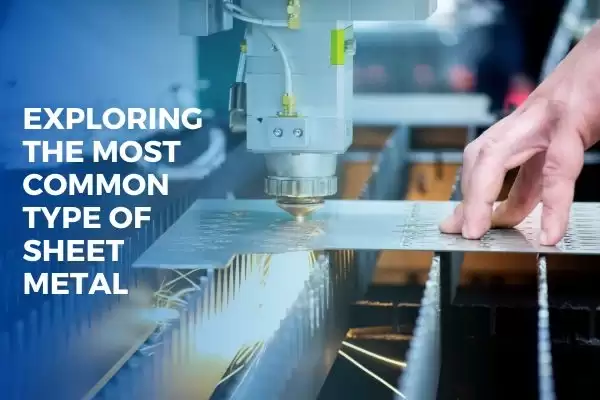
Nov 17,2023
Sheet metal, a versatile material with applications across various industries, is pivotal in constructing the world around us. Its adaptability and durability make it essential in the construction and aerospace sectors. In this article, we delve into the intricacies of sheet metal, shedding light on its diverse types. Specifically, we'll explore the two most common types—Mild Steel and Aluminum—and provide valuable insights to assist you in choosing the right material for your projects.
Before diving into the specifics, let's establish a foundation by understanding sheet metal. Sheet metal is a form of metal that is produced by industrial processes, typically in thin and flat pieces. Its composition can vary, but the most common materials include steel, aluminum, brass, and copper. Sheet metal is known for its malleability, making it easy to shape and form into various structures.
The ubiquity of sheet metal is evident in its widespread use across diverse industries. Construction forms the backbone of structures, providing strength and durability. In the automotive industry, sheet metal fabricates car bodies, ensuring safety and aesthetics. Aerospace relies heavily on lightweight sheet metal for aircraft components, contributing to fuel efficiency. These examples underscore the importance of understanding the different types of sheet metal for specific applications.
Diving deeper, it's crucial to recognize that not all sheet metals are created equal. Factors such as alloys, thicknesses, and finishes contribute to the diversity of sheet metal options. Alloys, in particular, can significantly impact the properties of sheet metal, influencing its strength, corrosion resistance, and cost.
Mild steel, also known as low-carbon steel, is popular in various industries. Its defining characteristic is its low carbon content, making it highly malleable and easy to work with. Mild steel is favored for its affordability and versatility.
Mild steel exhibits excellent strength, making it suitable for various applications. Its malleability allows for easy fabrication, making it an ideal choice for projects requiring intricate designs. Additionally, mild steel is known for its weldability, making it convenient for joining components.
Mild steel finds applications in construction, automotive manufacturing, and general engineering. Its cost-effectiveness makes it a go-to material for projects where strength and durability are paramount, but budget constraints must be considered.
Highlighting the Lightweight Nature of Aluminum
Aluminum, a lightweight and corrosion-resistant metal, has gained popularity in various industries. Its low density makes it an excellent choice when weight is crucial. Despite its lightness, aluminum boasts impressive strength, making it suitable for various applications.
One of the standout features of aluminum is its corrosion resistance. This property makes it particularly appealing for outdoor applications and industries where exposure to the elements is inevitable. Additionally, aluminum's versatility allows easy customization and adaptation to specific project requirements.
The automotive and aerospace industries heavily rely on aluminum for its lightweight properties, contributing to fuel efficiency in vehicles and aircraft. Aluminum's use extends to consumer goods, packaging, and even the construction of modern buildings.
To make informed decisions, it's essential to compare the two most common types of sheet metal—mild steel and aluminum.
Mild steel boasts superior strength to aluminum, making it suitable for applications that demand robustness. However, aluminum takes the lead if weight is a critical consideration due to its lightweight nature. Cost-wise, mild steel tends to be more budget-friendly, but the specific requirements of your project should dictate the ultimate choice.
When selecting sheet metal for your project, several factors come into play:
Understand the specific needs of your project. Consider factors such as load-bearing capacity, exposure to the elements, and the required level of precision.
While mild steel is often more cost-effective, weighing the upfront cost against the long-term benefits is essential. Aluminum's durability and resistance to corrosion might justify a higher initial investment.
In an era where sustainability is a priority, consider the environmental impact of your choice. Both mild steel and aluminum can be recycled, but the recycling process for aluminum is notably energy-efficient.
If the decision-making process becomes overwhelming, don't hesitate to consult with professionals in the field. Their expertise can guide you towards the most suitable option for your project.
As technology advances, so does the field of sheet metal manufacturing. Innovations in alloys, coatings, and fabrication techniques are shaping the future of sheet metal. Sustainable options are gaining traction, focusing on reducing environmental impact and improving the overall efficiency of sheet metal production.
In conclusion, understanding the two most common types of sheet metal—mild steel and aluminum—empowers you to make informed decisions for your projects. Whether you prioritize strength, weight, or cost, each type has unique advantages. Consider the specific requirements of your project, consult with professionals, and stay informed about emerging trends to ensure that you choose the right sheet metal for your needs.